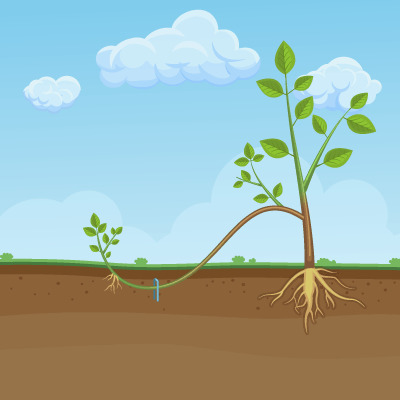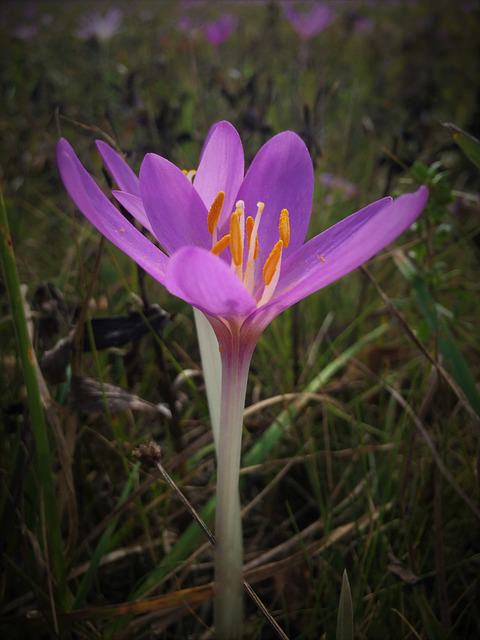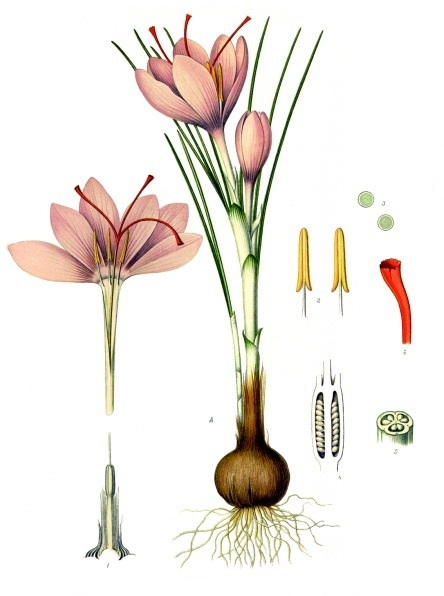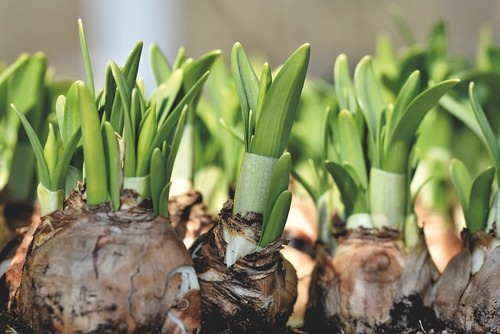13.52 植物植物的繁殖 -- -- 高级
章节大纲
-
Plant Propagation
::植物植物繁殖We propagate plants when we facilitate or promote their . We can do this by growing plants from seeds or spores, the products of (except in apomixis!). Techniques for breaking dormancy and inducing germination , discussed in the lesson on seeds, are used to produce seedlings, which can then be grown into plants which differ from their parents. Techniques for self- and cross- pollination further control this process.
::当我们促进或促进植物生长时,我们宣传植物。我们可以通过种籽或种子种植植物来做到这一点,这些植物是(除灭蚁灵之外! )的产物。 种子课中讨论的打破宿舍和诱发发发芽的技术被用来生产幼苗,然后可以发展成不同于父母的植物。 自我和交叉授粉技术进一步控制了这一过程。We also use natural methods of asexual or , as discussed in the previous section, to propagate plants. Procedures such as grafting modify these natural methods to make artificial propagation more efficient.
::我们还使用性欲的自然方法,或如上一节所讨论的那样,传播植物。 诸如搭配修改这些自然方法等程序可以提高人工传播的效率。Finally, we have gone beyond nature to develop completely new methods for propagating plants, such as tissue culture. The follow paragraphs summarize some of the many ways we propagate plants. Because (sexual) seed propagation was discussed in some detail in the last lesson, we will focus here on asexual methods of plant propagation.
::最后,我们超越了自然,发展了全新的植物传播方法,如组织文化,下面各段总结了我们推广植物的许多方法中的一些方法,因为(性)种子传播在最后的一堂课中得到了较详细的讨论,因此我们将在此集中探讨非性植物传播方法。Cuttings (Striking)
::剪切( 剪切)The most straightforward method of propagating plants is cutting or striking, in which a piece of parent plant containing at least one is removed and embedded in moist soil or other medium to form new . Some plants will root in . Depending on the , cuttings may be taken from stems, roots, dormant woody twigs, , or leaves. Specific requirements for soil type, humidity, and light may be important. Stem cuttings are used to propagate fig and olive trees, and leaf cuttings are routinely used to propagate cultivars of African violets ( Figure ).
::最直接的传播植物的方法是切割或撞击,其中至少含有一种植物的母植物被切除并嵌入潮湿土壤或其他介质中,以形成新的植物。有些植物将根植于......视其根部、根部、休眠木质树枝或树叶而定。土壤类型、湿度和光度的具体要求可能很重要。刺切用于传播无花果树和橄榄树,叶切通常用于传播非洲紫花的品种(图示)。Cuttings remove a portion of stem, root, or leaf which includes one or more stem cells. These are embedded in a suitable medium to encourage root formation, which produces independent plants. Layering
::层层In nature, the tall branches of brambles such as blackberries arch over to the ground; where their tips touch the soil, they send out adventitious roots, which form new plants, which can grow on their own when connections are broken. New plants may take from several weeks to a year to become independent, but this ground layering is an effective method of vegetative reproduction, because young plants can continue to receive water and nutrition from their parents while becoming established.
::在自然界中,黑莓拱门等高高的结膜枝直伸到地面;当它们的尖尖触碰到土壤时,它们会发出冒险的根,这些根形成新的植物,当连接中断时,这些植物可以自己生长。 新的植物可能需要几周到一年的时间才能独立,但这种地面分层是植物繁殖的有效方法,因为年轻植物在建立时可以继续从父母那里得到水和营养。In Layering, a stem branch is bent and buried in the soil while it is still attached to the parent plant. Horticulturalists encourage ground layering by wounding a target region to expose the stem and applying rooting before burying the target region in the ground. A few varieties of apples are propagated by ground layering. Air layering is similar, but the wounded target stem area is wrapped in sphagnum moss and airtight polyethylene to hold in moisture and provide an environment within which roots will develop. After root is well established, the stem is cut below the roots, and the branch with roots planted separately (see diagrammatic explanation referenced at end of lesson). Gardenias, roses, figs, and magnolias are sometimes propagated by air layering.
::园艺学家通过伤害目标区域来鼓励地面层,从而在将目标区域埋在地面之前暴露干叶并植根于土壤中。一些苹果品种是通过地面层传播的。空气层相似,但受伤的目标干块被包裹在沙发藻和空气密闭的聚乙烯中,以保持水分,并提供一个根根发展的环境。根扎好后,将干叶切入根底之下,将根根根分开种植(见课末的图表说明 ) 。 园林、玫瑰、无花果和木兰有时通过空气层传播。Division
::司司司Saffron, the most expensive spice in the world, is a brilliant yellow powder produced by drying the bright red stigmas and style of a certain mutant crocus ( Figure ). Alas, these organs of sexual reproduction are sterile, because the crocus, like dandelions (but much more precious!), is triploid. The crocus does produce corms, each of which reproduces up to 10 “cormlets” per season. Dug and separated by hand, the cormlets can be replanted as individuals to produce more saffron the following season. Such separation of naturally reproduced vegetative organs is known as division - a simple but effective method of propagation used for plants which form corms, tubers, bulbs, and rhizomes.
::藏红花是世界上最昂贵的香料,它是一种光辉的黄色粉末,通过烘干某个变种花椰子(Figure)的明亮红色污名和风格而产生。 唉,这些性生殖器官是无菌的,因为花栗,如丹迪利翁(Dandelions,但更珍贵! ),是三重的。 花栗确实产生卷心菜,每季每季都有多达10个“圆筒”的繁殖。 Dug和手分开,花栗可以作为个体重新种植,在下一季生产更多的藏红花。 天然复制的植物器官的这种分离被称为分裂 — — 一种简单有效的传播方法,用于形成卷心、管、灯泡和Rhizomes的植物。-
Edit here for caption
::编辑此标题 -
Edit here for caption
::编辑此标题
Division is a simple but effective method of vegetative propagation used for plants which form corms, tubers, bulbs, and rhizomes. Saffron (inset) is the most expensive spice on earth, formed from the bright red stigmas and style of a sterile triploid crocus. Division of “cormlets” formed by the corm is the labor-intensive and only form of propagation.
::树枝是地球上最昂贵的香料。 红花(Inset)是由无菌的三胞胎的明亮红色污名和风格形成的。 由碳构成的“圆筒”是劳动密集型的,也是唯一的传播形式。Twin-Scaling
::双缩放In nature, bulbs reproduce very slowly – doubling only every two years or so. However, if they are injured, they will produce “bulblets” much more rapidly. Horticulturalists promote bulb reproduction with carefully controlled injuries, producing up to 100 clones per individual bulb under optimal sterile conditions. This practice is twin scaling . Amaryllis, snowdrop, narcissus, some lilies, and hyacinths are produced commercially through twin scaling.
::在自然界,灯泡的繁殖速度非常缓慢 — — 大约每两年翻一番。 但是,如果它们受伤了,它们就会更快地生产“弹泡 ” 。 园艺学家提倡灯泡的繁殖,并仔细控制伤口,在最佳不育条件下每个灯泡产生多达100个克隆体。 这种做法是双向的。 氨酸盐、雪滴、自恋、一些百合、和催眠剂都是通过双向缩放来商业生产的。-
Edit here for caption
::编辑此标题 -
Edit here for caption
::编辑此标题
Plants which grow from bulbs, such as narcissus (left) and hyacinth (right), can be propagated rapidly by twin-scaling, which stimulates bulbs to reproduce more rapidly than in nature.
::由灯泡生长的植物,如自旋索斯(左)和Hyacynth(右),可以通过双缩放迅速传播,双缩放能刺激灯泡比自然更快地繁殖。Grafting
::抢 抢You may have heard of skin grafting, in which skin from one part of the body is moved to another part which has been badly burned. Propagating plants by grafting is similar, except that it usually involves the fusion of tissues from two different kinds of plants, producing what might be called “chimaeras”. Often used to produce hardy shrubs and trees, grafting fuses tissues from one plant with desirable root systems (the rootstock) with tissues from a second plant with hearty stems, leaves, flowers , and fruit . Grafting requires that the vascular cambium of both plants be in contact, so only and gymnosperms can be propagated by this method.
::你可能听说过皮肤系结,其中皮肤从身体的某一部分移到被严重烧坏的另一部分。通过系结而传播植物是相似的,但通常涉及两种不同种类的植物组织凝聚,可以称为“chimaeras ” 。 通常用来生产硬灌木和树木,从一个植物中将带有理想根系(根植)的导管组织从一个植物中与第二个植物中带有心根、树叶、花卉和水果的组织连结起来。 割裂需要两种植物的血管细胞接触,因此只有体操和体操才能通过这种方法传播。In Grafting, the scion and rootstock will grow together, and the scion will develop into a new plant Grafting can solve many plant propagation problems:
::收购可以解决许多植物传播问题:-
reducing the size of fruit trees, to bear more fruit and make it easier to pick (apples, pears, plums, cherries)
::缩小果树的面积,增加果树的面积,增加果树的面积,使其更容易采摘(苹果、梨、李子、樱桃) -
propagating plants which are difficult to root (by grafting them onto other rootstock)
::种植难以根植的植物(通过将其植入其他树根) -
reducing growing time (by grafting young plants onto established rootstock)
::减少生长时间(将年轻植物植入已有的根地) -
to improve hardiness or adapt weak-rooted plants to heavy soils
::改进坚固性或使薄弱的植物适应重土 -
to provide trunks for plants with shrub-like growth forms, such as roses
::为玫瑰等树丛生长形态相似的植物提供树干 -
to attract
pollinators
::以吸引授粉者 -
to repair damage caused by
or girdling
::修理或套管所造成的损害 -
to provide disease-resistant rootstocks
::提供抗疾病根植根 -
to grow plants such as orchids which are otherwise difficult or impossible to grow from seed Grafting has saved European grapes, devastated by a soil insect which girdles their rootstocks. Grafting onto resistant rootstocks of American grapes protects them from this infestation.
::种植像兰花这样的植物,这些植物本来很难或不可能从种子脱落中生长出来,但是它拯救了欧洲葡萄。 欧洲葡萄被土壤昆虫所摧残,而土壤昆虫刺破了树根。 在美国葡萄的抗药性根片上扎根保护着它们免受这种侵袭。
Tissue Culture: Micropropagation
::组织文化:微促进Like nearly all human cells, most plant cells have all the genetic information they need to build whole new plants; the problem in building a whole new plant from a single cell is to coax the cell to express each gene in the proper sequence. Tissue culture, or micropropagation, works to accomplish just this feat, much as scientists did for the sheep named “Dolly” in honor of the udder cells used to provide the information to grow her (see chapter). In general, cells from the plant’s meristem tissue are most successful, as stem cells are most successful in animals.
::与几乎所有人类细胞一样,大多数植物细胞都拥有建造整个新植物所需的全部遗传信息;从一个细胞中建立整个新植物的问题在于将细胞合二为一,以表达每个基因的正确顺序。 组织培养,或微植入,都是为了完成这一成就,正如科学家们为羊“多莉”所做的那样,为羊“多莉 ” ( Doll ) ( Doll ) ( Doll ) , 以纪念用来提供培养她的信息的乳头细胞(参见一章 ) 。 一般来说,植物中间组织中的细胞最为成功,因为干细胞在动物中最为成功。In Tissue culture, small pieces of plant parts are placed in sterile nutrients that grow into new plants. culture requires:
::文化要求:-
sterile conditions to prevent disease
::预防疾病的不育条件 -
a precisely designed medium to supply necessary
nutrients
(salts,
organic molecules
, and vitamins)
::a 提供必要营养物质(盐、有机分子和维生素)的精确设计媒介。 -
to stimulate development (
for roots, cytokinins for shoots)
::刺激发展(根、细胞基素用于射击) -
the “starter tissue” or
explant
: a single cell, a cell whose
cell wall
has been removed (
protoplast
), or a small piece of shoot, leaf or (less often) root tip
::“起动组织”或除植:单细胞,其细胞壁被除去的细胞(protopast),或小片片片片片、叶叶或(较少)根尖
Initially, plant tissue cultures may resemble bacterial culture; often agar is added to the nutrient medium for support. As the tissue grows, initially formless masses of cells may be subdivided and moved to different media to change growth patterns. For example, as shoots form, they may be cut off and placed into a rooting environment. Subdivision also simply multiples the number of plants eventually produced. Further growth may utilize hydroponics and aeroponics , techniques which employ nutrient-enriched water and air, rather than disease-harboring soils. Eventually, young plants must be weaned from their warm, high humidity, low-light environments and “hardened” to more natural conditions so that they grow the tough cuticle , necessary stomata , and immune systems needed to survive in nature.
::最初,植物组织培养物可能类似于细菌培养物;通常在养分介质中添加藻类作为支撑物。随着组织生长,最初无形态的细胞团团可能会被分解并移动到不同的介质中以改变生长模式。例如,作为射击形式,植物组织组织培养物可能会被切断并植入根底环境。分种还只是最终生产的植物数量的倍数。进一步的生长可能利用水栽培物和动脉,使用营养丰富水和空气的技术,而不是疾病产生土壤。 最终,年轻植物必须断除其温暖、高湿度、低光度环境,并“硬化”到更自然的环境,以便它们生长坚硬的切片、必要的斯托马塔和自然生存所需的免疫系统。Micropropagation produces clones, often desirable for select varieties or cultivars whose seeds, as the result of sexual reproduction, would have different genetic composition. The many uses of this technique include:
::微生物改良产生克隆物,这些克隆物往往适合于某些品种或栽培者,其种子由于性生殖而具有不同的遗传成分。-
:
propagating endangered species (although in this case, genetic uniformity is a drawback)
:::传播濒危物种(尽管在这种情况下,遗传统一性是一个缺点) -
screening:
testing cells from whole plants for characteristics such as herbicide resistance
::筛选:整个工厂用于检测抗除草剂抗药性等特性的测试细胞 -
pharmaceutical production:
mass cultures in bioreactors
::制药生产:生物反应器中的大众培养 -
breeding:
hybridizing distantly related species by fusion of protoplasts
::繁殖:通过聚积颗粒体使与世隔绝的物种混合 -
embryo
rescue:
cultivation of “seedless” grapes, as discussed in the fruits and seeds lesson
::如水果和种子教训中所讨论的那样,种植“无种”葡萄 -
genetic engineering
:
introducing new genes or changing
number (e.g.,
haploid
to diploid)
::遗传工程:引进新的基因或改变数字(例如,手稿到diploid) -
treating disease:
for example, producing virus-free cells from virus-infected tissues
::治疗疾病:例如,从感染病毒的组织中产生无病毒细胞
Summary
::摘要-
Promoting or facilitating the reproduction of plants is plant propagation.
::促进或促进植物的繁殖是植物繁殖。 -
Many methods of plant propagation use our understanding of sexual and vegetative plant reproduction.
::许多植物传播方法利用我们对性植物和植物植物繁殖的理解。 -
Cuttings and layering induce parts of plants to grow new roots in order to multiply them asexually.
::切割和分层诱使植物的某些部分生长新的根部,以便使其无性繁殖。 -
Clones can be obtained by division of naturally produced rhizomes, tubers, corms, and bulbs.
::可以通过分分自然生产的雷宗、管、电管和灯泡获得克隆。 -
Grafting combines parts from two plants to produce hardier, more productive “chimaeras”.
::将两家工厂的部件合在一起,生产更坚硬、更有生产力的“芯片”。 -
Micropropagation is useful in conservation, pharmaceuticals, breeding, hybridization, and disease control.
::微压改善在保存、药品、育种、混合和疾病控制方面是有用的。
-








